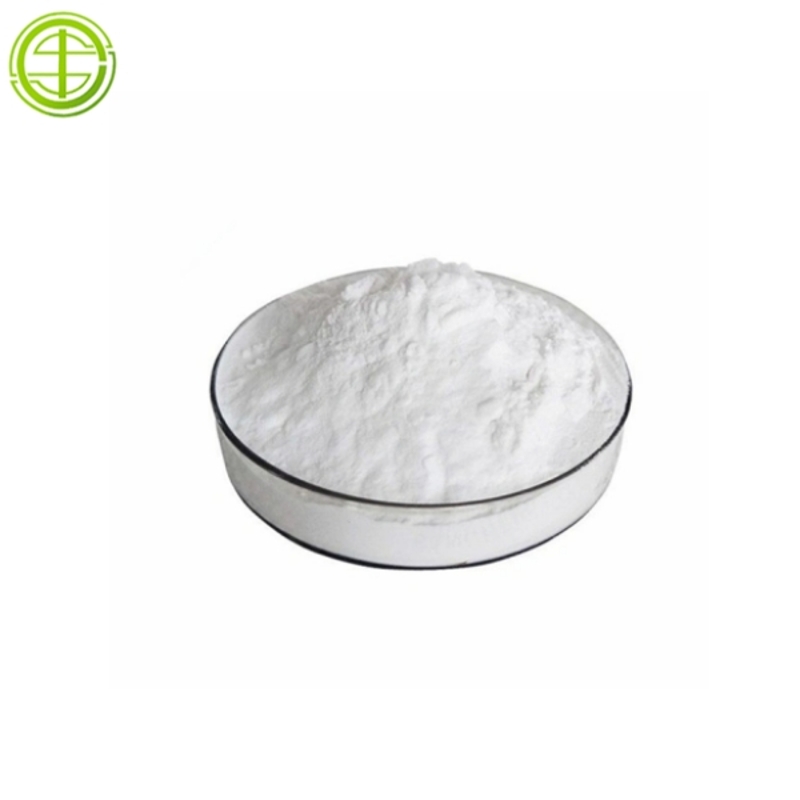-
Categories
-
Pharmaceutical Intermediates
-
Active Pharmaceutical Ingredients
-
Food Additives
- Industrial Coatings
- Agrochemicals
- Dyes and Pigments
- Surfactant
- Flavors and Fragrances
- Chemical Reagents
- Catalyst and Auxiliary
- Natural Products
- Inorganic Chemistry
-
Organic Chemistry
-
Biochemical Engineering
- Analytical Chemistry
- Cosmetic Ingredient
-
Pharmaceutical Intermediates
Promotion
ECHEMI Mall
Wholesale
Weekly Price
Exhibition
News
-
Trade Service
China is a large country in the production and consumption of chicken, and a large number of by-product chicken racks
will be produced in the daily production and consumption process.
Traditional mechanical meat collection and hydrolysis methods cannot make full use of chicken rack protein, which is often used to produce feed or directly discarded, resulting in waste of resources and environmental pollution
The acid/alkali dissolution isoelectric precipitation (ISP) method can be used to extract meat protein from aquatic raw materials and low-value poultry meat, which has the advantages
of simple process, high protein recovery and maintaining protein gel characteristics.
Tian Jinhe and Zhou Yaqi of the School of Life Sciences and Basic Medical Sciences of Xinxiang University used high-intensity ultrasound (HIU)-assisted ISP method to extract protein isolate (PI) from chicken racks to study the composition of chicken racks PI and its gel characteristics under different acid/alkali dissolution and HIU-assisted conditions, in order to provide theoretical data reference
for the high-value utilization of chicken racks.
01 Chicken rack protein dissolving characteristics
It can be seen from Figure 1 that without HIU treatment, with the gradual enhancement of acidity/alkalinity of chicken rack homogenate, the protein concentration gradually increased, and at pH 3.
0 and pH 11.
5, the protein concentration increased to 11.
87 mg/mL and 13.
37 mg/mL, respectively, and continued to enhance acidity or alkaline, and the protein concentration no longer changed
significantly.
At pH 5.
5, the protein concentration in the homogenate is the lowest, that is, pH 5.
5 is the apparent isoelectric point
of chicken shelf protein.
The above dissolving properties are basically consistent with chicken breast protein, indicating that myofibrillar protein (skeletal muscle) is the main protein
in chicken racks.
HIU treatment can increase the protein concentration in the homogenate, and after HIU treatment, the protein concentration at pH 11.
5 is increased to 14.
38 mg/mL, and it has been reported that the protein concentration of mackerel meat homogenate is also significantly increased
after HIU treatment.
HIU promotes protein dissolution mainly due to its cavitation effect
.
The micron-scale physical oscillations of this effect may have contributed to the separation of skeletal muscle from the chicken skeleton and the collapse
of the myofibrillar protein ultrastructure.
According to the above results, pH 3.
0 and pH 11.
5 were selected as the dissolved pH values of chicken rack PI extracted by ISP method in this experiment, and the effects of
HIU treatment on PI composition and gel characteristics at pH 3.
0 and pH 11.
5 were studied respectively.
02 SDS-PAGE analysis results of protein samples
As shown in Figure 2, the main protein components of chicken rack and chicken breast are consistent, both are myofibrillar protein, and the four new bands in the chicken rack SDS-PAGE map may be derived from collagen
in the bone.
Compared to chicken breast, PI contains more small molecular mass proteins (molecular weight about 14.
4 kDa and < 10 kDa), probably from bone marrow<b11>.
03 PI gel texture properties
As shown in Table 1, the hardness and elasticity of alkaline soluble PI gel are significantly higher than those of acid soluble PI gel (P<0.
05), which may be due to: on the one hand, MHC degradation in acid-soluble PI, reduced content, shortened molecular chain length, affected the cross-linking aggregation of proteins, such as Chen Yichen et al.
showed that the degradation of proteases led to the inability of trout processing by-product proteins to form gels; On the other hand, alkalinolysis treatment exposes myosin to more hydrophobic groups and sulfhydryl groups, contributing to the formation<b10> of protein gels.
04 PI gel water holding capacity
As shown in Table 1, the cooking loss rate and centrifugation loss rate of alkaline dissolved PI gel were significantly lower than that of acid-soluble PI gel, and there was no significant difference
from the control gel.
HIU treatment significantly reduced the cooking loss rate and centrifugation loss rate (P<0.
05) of acid-soluble PI gel, and enhanced the water holding capacity, but had no significant effect on alkaline-soluble PI gel<b11>.
The water holding capacity of the gel mainly depends on the compactness and integrity of the protein network and its ability to retain water, and the three-dimensional network with uniform tissue has a stronger water holding capacity
.
05 PI gel whiteness
The whiteness of PI gel was significantly lower than that of the control gel (P<0.
05), which was due to the precipitation of chromoproteins such as myoglobin and hemoglobin contained in the bone marrow in the chicken rack during the centrifugation process of preparing PI (corresponding to the small molecular mass protein band at the bottom of lane 7~10 in Fig.
2).
<b10> Acid-soluble PI recovers a small amount of chromoprotein, and acid treatment is more likely to cause conformational changes of such proteins, so acid-soluble PI gels have higher
whiteness.
06 PI gel moisture distribution
As shown in Figure 3, there are four types of water relaxation time (T2) in gel samples: T2b1 (0~1 ms), T2b2 (1~10 ms), T21 (80~120 ms) and T22 (900~1 700 ms), corresponding to the surface adsorption water (T2b1 and T2b2), capillary force-bound water (water that is not easy to flow, T21) and free water (T22), respectively, indicating the relative content of water in different states as a percentage of each peak area.
They are denoted as P2b2, P2b2, P21 and P22
respectively.
It can be seen from Table 2 that the P21 of the five groups of samples is greater than 95%, indicating that the gel is mainly water
that is not easy to flow.
Without HIU treatment, the T2b2, T21 and T22 of acid-soluble PI gels were significantly greater than those of alkaline-soluble PI gels (P<0.
05), indicating that the latter had stronger binding and binding force to water molecules, although there was no significant difference in P21 between the two, considering that acid-soluble PI gels had a greater cooking loss rate (18.
41% and 12.
34%) than alkaline-soluble PI gels, it can be inferred that the actual content of water that is not easy to flow in the latter is higher than that of the former, indicating that alkaline-soluble PI gels have stronger water <b12>holding capacity 。
07 PI gel microstructure
As shown in Figure 4, when not treated with HIU, the microstructure of acid-soluble PI gel is obviously rough and porous compared with alkaline-soluble PI gel, while the latter is more uniform and dense, with obvious protein molecule cross-linking structure, which is close to the control gel, indicating that alkaline soluble PI has good gel formation ability, and its uniform and dense gel structure also explains its good texture (hardness and elasticity) and water holding capacity
.
HIU treatment can significantly improve the microstructure of acid-soluble PI gels, indicating that the poor microstructure of acid-soluble PI gels is mainly due to MHC degradation
.
The microstructure of alkaline dissolved PI gels before and after HIU treatment was relatively uniform and dense, indicating that HIU treatment had no significant effect
on the formation of microstructure of alkaline soluble PI gels.
Conclusion
The ISP method can efficiently extract chicken rack protein, and the main components of PI obtained are myofibrillar protein and a variety of small molecule mass proteins.
Acid-soluble conditions cause MHC degradation and deteriorate PI gel properties, but HIU assistance can improve this phenomenon
.
Alkaline PI had good gel formation ability, and there were no significant differences in gel texture and water holding capacity compared with control
gels.
HIU treatment promotes protein solubility under alkaline dissolution conditions without affecting the ability of PI to
form a gel.
PI contains more chromoprotein, resulting in lower whiteness of the gel prepared than that of the control gel
.
Chicken rack alkaline soluble PI has the same gel-forming ability as chicken breast protein, which is of great significance
to the value-added utilization of chicken rack, a large low-value protein resource.
This article "Composition and gel characteristics of ultrasound-assisted acid/alkali solubility isoelectric spot precipitation method for the extraction of chicken rack protein isolate" is from Food Science, Vol.
43, No.
17, 2022, pages 124-130, authors: Tian Jinhe, Wang Yanjie, Zhou Yaqi, Lin Fang, Wang Shuli, Wang Liping
.
DOI:10.
7506/spkx1002-6630-20220211-067
。 Click below to read the original article to view information about the article







